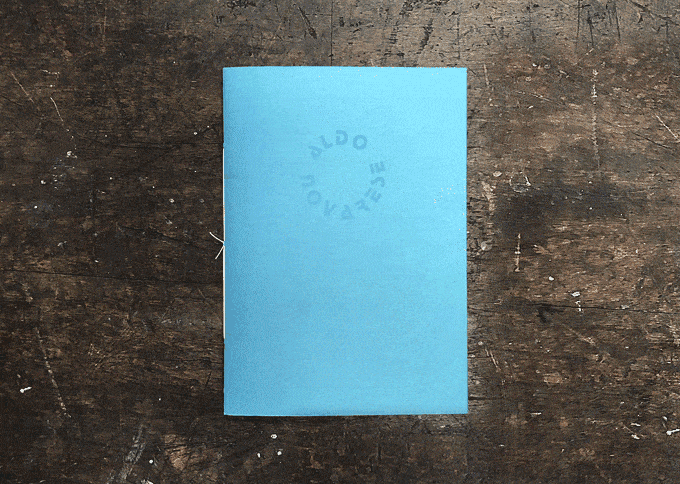The first edition of Alfa-Beta reviewed the evolution of writing systems and typography from their advent up to the present day. The first edition was published in 1964 by Progresso Grafico and distributed by G.B. Paravia & C. The book showcases a very specific point of view: it is one of very few works on the history of type originally written in Italian, and one of even fewer to have been written by a type designer rather than a historian or academic. It also marked the public debut of Novarese’s own typeface classification system.
This slipcased facsimile edition comes alongside a softcover Reader’s Guide in the exact same trim size, which includes: the full English translation of Novarese’s original text; an introduction by the editorial and production teams describing the development of the reissue; and a preface by Enrico Tallone on the historical context within which Novarese wrote Alfa-Beta.
Letterpress Specimen.
To celebrate the centenary of Aldo Novarese’s birth a limited-edition specimen book will be produced, designed and printed with movable types from Archivio Tipografico’s collection—all designed by Novarese and cast by Nebiolo foundry—including Magister, Stop, Fontanesi, Metropol, Garaldus, Eurostile, Juliet, Slogan, Forma, Dattilo, Nova Augustea, and Estro. This specimen will be part of the Deluxe Edition.
Backstory.
This project arose from the deep passion for letterforms and typography underlying our quest for inspiring books we often fall in love with. Type-crazed designer Lorenzo Bolzoni had his eye on one such book, but no luck finding it: Aldo Novarese’s Alfa-Beta. When he finally got his hands on a copy, the joy he felt sparked the idea of a reissue. He decided to reach out to Aldo’s heirs and, with help from Tipoteca Italiana—a museum in northeastern Italy that houses most of Novarese’s surviving work—got in touch with Matilde Argentero, one of his granddaughters. Serendipitously, she had recently begun rediscovering her grandfather’s work during visits to Archivio Tipografico, so was enthusiastic about the idea. She intuitively knew Archivio Tipografico’s team would be eager to dive in.
Support this project on Kickstarter
text & images source
you might also like
25x25.Tipoteca Italiana 25
Whittington Press Open Day. 07.09.2019
Visiting Bodoni Museum in Parma. 28.06.19
Pastabodoni (or Manuale Pastagrafico)
Visiting Familia Plómez in Madrid
Trip to Amsterdam. Makers Match & GWA.
Museum 't Aloam
Zomertyposium 2017 / 2018
Letterpress Amsterdam
Print Me Baby One More Type or LpW 2017
Visiting the London College of Communication
St Bride Foundation Wayzgoose 2017
Trip to Barcelona. Part I. Lauren Press
Trip to Barcelona. Part II. BunkerType
Bookbinders' Fair. Sint- Niklaas, Belgium



